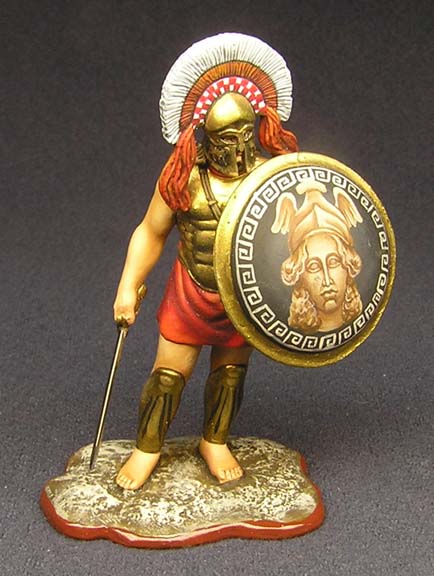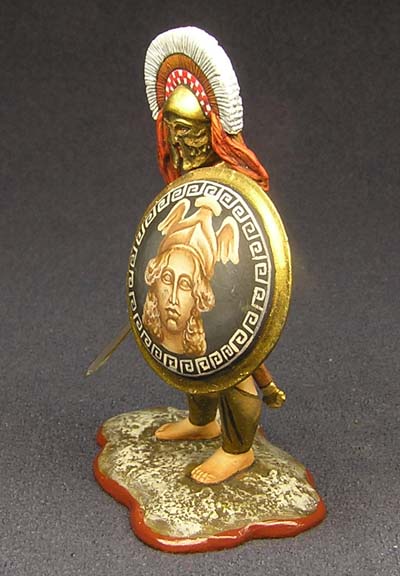Greek Officer


These hoplites were almost uniformly attired. They wore helmets of bronze which were often embossed or painted and fitted with horsehair crests. These warriors wore a cuirass to protect their chest and back. The cuirass was often bronze with a "muscled" pattern, or leather or even heavy fabric pressed together for strength.
The hoplite carried a round shield made of wood and covered in bronze. His principal weapon was a long wooden spear with an iron blade. A sword for close combat was also part of his gear.
The really unique aspect of the hoplite warrior in the years between 600-300 BC was that he fought as a member of a disciplined team and not as an individual. Lined up in phalanxes each man in his place, side by side and row by row they advanced into battle. Officers in the Greek phalanx battle formation served in the front ranks on the right-hand side. Given their leading from the front, officer losses were high.
Generals who lost battles frequently were put on trial and faced fines, banishment and even execution for their battlefield failures.
Light infantry duties were performed by the Peltasts who wore no armor and fought with javelins. The Peltasts, so named for the wicker half-moon shaped shields they carried on their backs, were invariably Thracian. Archers and sling-men were recruited from the Scythians and Cretans.



 Up
Up